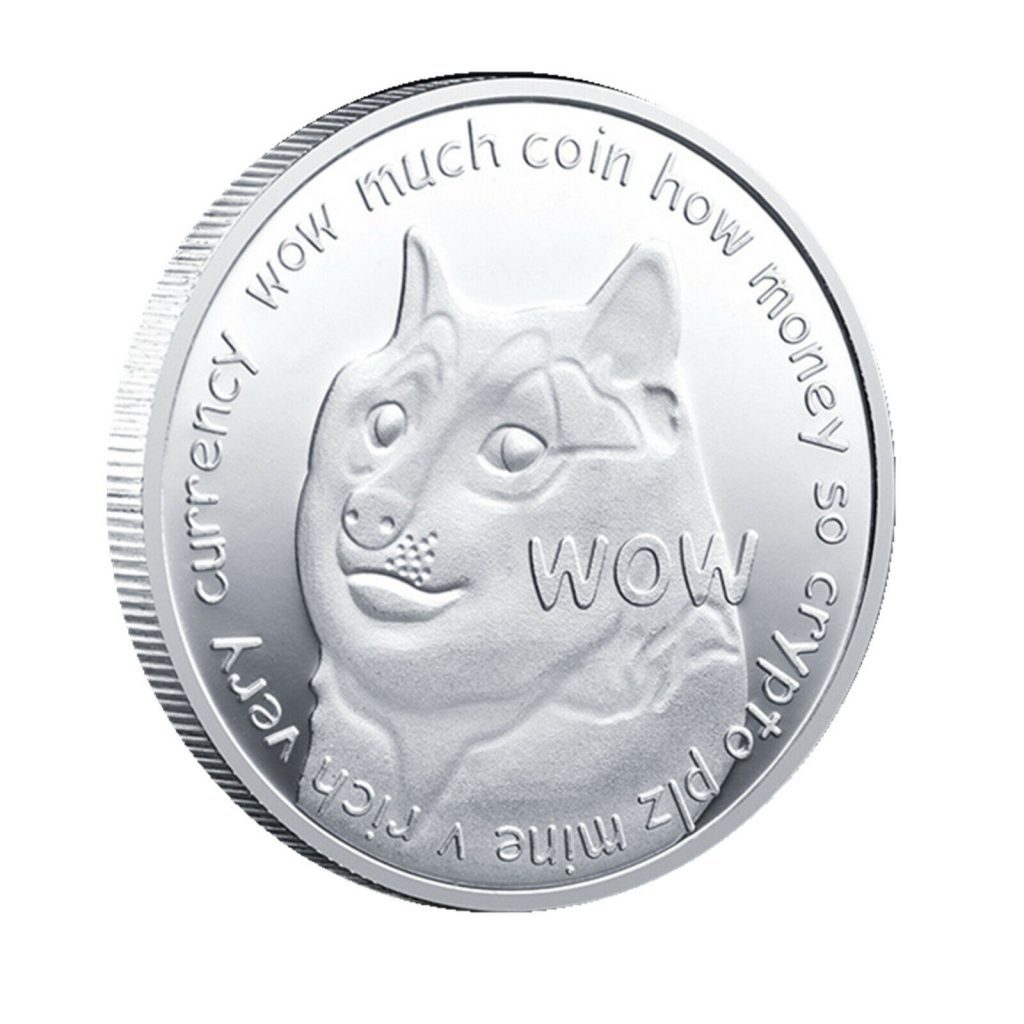
Dogecoin
Dogecoin (DOGE) was created as a lightweight alternative to traditional cryptocurrencies like Bitcoin in 2013. The Shiba Inu name and logo are based on a meme. Unlike Bitcoin, which is designed to be rare, Dogecoin is intentionally rich – with 10,000 new coins being mined every minute and no supply limit.
For most of its existence, Dogecoin (pronounced “dohj coin”) was considered a fun “memecoin” loved by its community – but it was worth very little. That changed in 2021, when DOGE became one of the largest cryptocurrencies by market capitalization – with a total value of $80 billion in 2021, even though each coin is worth pennies.
Dogecoin History
Jackson Palmer, product manager at Adobe Inc. based in Sydney, Australia, created Dogecoin in 2013 to satirize the media around cryptocurrencies. After getting positive response and interest in social media
Billy Markus, a software developer at IBM, wanted to create a digital currency but struggled to promote his efforts. Markus collaborated with Palmer to create the software behind the real Dogecoin.
Markus is based on Dogecoin and Luckycoin codes, Litecoin was launched, and used random rewards for block mining, although this was changed to fixed rewards in March 2014. Dogecoin uses Litecoin’s cryptographic technology and is a proof-of-work (PoW) coin.
Palmer and Markus released the coin on December 12. 6, 2013. Two weeks later, December 6, 2013. On January 19, the value of Dogecoin jumped 300%, buoyed by China’s policy to ban its assets from investing in cryptocurrency.
Dogecoin Strategy
There is no limit to supply
Dogecoin does not have a limited supply like other cryptocurrencies like Bitcoin. Dogecoin miners earn 10,000 DOGE per block, each block is created every minute. This means that 14,400,400 new DOGE tokens are generated every day, which are then sold on the market or stored in miners’ wallets.
At the time of writing, there are approximately 131.28 billion DOGE in circulation, with a market capitalization of $31.67 billion and a price of $0.24.
Administrative structure
Decentralization is the security aspect that governs most cryptocurrencies, meaning that security is in the hands of a group of users around the world. The extraction of cryptocurrency is usually measured by the number of nodes in its network and the distribution of miners. According to blockchain founder, Blockchair, Dogecoin has around 1,090 nodes compared to 10,000 nodes in 97 countries for Bitcoin. This makes the Dogecoin network vulnerable to a 51% attack when one person or company controls more than 50% of the network.
Most Dogecoins are in very few hands
Most Dogecoin wallets have a large DOGE in circulation, which poses a risk because they have limited control over price fluctuations and market capitalization. It is estimated that 0.002% of Dogecoin wallets hold about two-thirds of the total DOGE. It is a very different situation with Bitcoin, which is distributed and held by individual portfolios.
Dogecoin working principle
Dogecoin uses a proof-of-work system to add blocks and validate transactions. While Bitcoin uses a SHA-256 hash function for mining, Dogecoin relies on Litecoin’s Scrypt, an ASIC-resistant algorithm. DOGE is a fork of LuckyCoin, which itself is a fork of Litecoin. However, Dogecoin developers switched to a decentralized mining model to avoid risks and competition from the Litecoin community. This means that Litecoin miners can also mine Dogecoin without any effort.
Unlike Litecoin, Dogecoin does not have a limited number of DOGE tokens. The inflation-based system is designed to ensure that miners will always be rewarded with new Dogecoins.
Initially, DOGE’s total budget was capped at 100 billion, with an additional 5.256 billion to be released annually thereafter. Dogecoin mining targets a block time of one minute and 10,000 coins are rewarded per block.
As of December 2020, Dogecoin has 130 billion coins in circulation.
Advantages of Dogecoin
The working community is growing
One of the advantages of Dogecoin is that it has an established and growing community of users and supporters. It is one of the top 10 financial institutions in the world by market capitalization. He even once placed fourth. Cuban and Musk explained that its growing user base makes it a good replacement system. Note that the community donated up to 30,000 USD to support the trip of the Jamaican bobsleigh team to the Winter Olympics in Sochi in 2014, another donation up to 11,000 USD to build a well in Kenya and another up to $55,000 to support a driver NASCAR Josh Wise.
Compatibility is unchanged
This cryptocurrency can be regulated and traded on an exchange. Specifically, Ren’s work allowed him to work on the platform of the Ethereum blockchain, as well as to access the decentralized financial network. This means that it coincides with the irrational financial movements that occur in the cryptocurrency market. In addition, although it cannot execute smart contracts directly because it runs on its own blockchain without smart contract functionality built in, it can be “wrapped”, thereby locking it into state which can be negotiated until it is published. later.
The positive side of volatility
Cryptocurrencies are highly volatile due to their influence on speculative activities, increasing intensity of competition, and lack of global consensus as a collective asset class. Their historical performance has seen high margins and sudden price declines in short periods of time. The same goes for Dogecoin. However, the exchange rate can have some advantages, especially for day traders or those who buy and sell property on the same day. Daily price changes can allow cryptocurrency traders to make huge profits from day trading.
Large supply and low price per token
Due to the large supply of Dogecoin and the low price per token, it is easy to buy and accumulate a large number of tokens. This also makes the currency suitable for online deposits.
A dedicated community
As we mentioned above, Dogecoin has a dedicated fanbase online. It shows a community that embraces the inclusion and fun that meme games involve, but it’s all about supporting its success.

Drawbacks of Dogecoins
The bag is made of paper
Besides shopping, Dogecoin is often used for online investment. Unlike Dogecoin, most of the world’s most popular cryptocurrencies offer one or more types of benefits.
The news cycle is affected
Dogecoin’s initial increase in value due to community support was followed by a huge jump based on popular tweets. Historically, the price of Dogecoin has fluctuated depending on its importance in the news cycle.
There is no supply cap
The lack of a supply cap is one of the disadvantages of Dogecoin. Unlike Bitcoin and Cardano from Ada cryptocurrency, which are deflationary in nature as they have a predefined cap and supply power shortage that can increase its value in the future, it is deflationary. Cryptocurrencies without a supply cap are a good asset to hedge against.
In addition, the increasing supply will eventually require a more extensive blockchain package service. Since this cryptocurrency uses a proof-of-work system to gain approval, it will need to expand the pool of miners and their powerful computers to handle the growing number of future business.
Dogecoin review
Media and financial experts have tried to take this cryptocurrency seriously. A small number of researchers have found that it is a very risky investment that is driven by redemption and disposal practices that are often speculative and driven by machine logic. Others call it a pyramid scheme. In his 2021 report published by Foreign Policy, David Gerard argued that there is no real use for cryptocurrencies apart from trading. He went on to say that these “wealths” have nothing. People who don’t know what they’re doing and who join the bandwagon often fail when it comes to personal finance and investing.
Poor technical support
Dogecoin has poor technical support despite its growing community of users and supporters. The development team is not like Bitcoin, Ethereum, and Cardano. Also, the product path is not as far as these major cryptocurrency markets. There haven’t been any major technological upgrades in development since 2015. It’s also important to point out that it doesn’t offer any unique selling proposition in terms of technology. The stated goals or objectives of this cryptocurrency and the entire blockchain platform are not very big compared to the main players.

